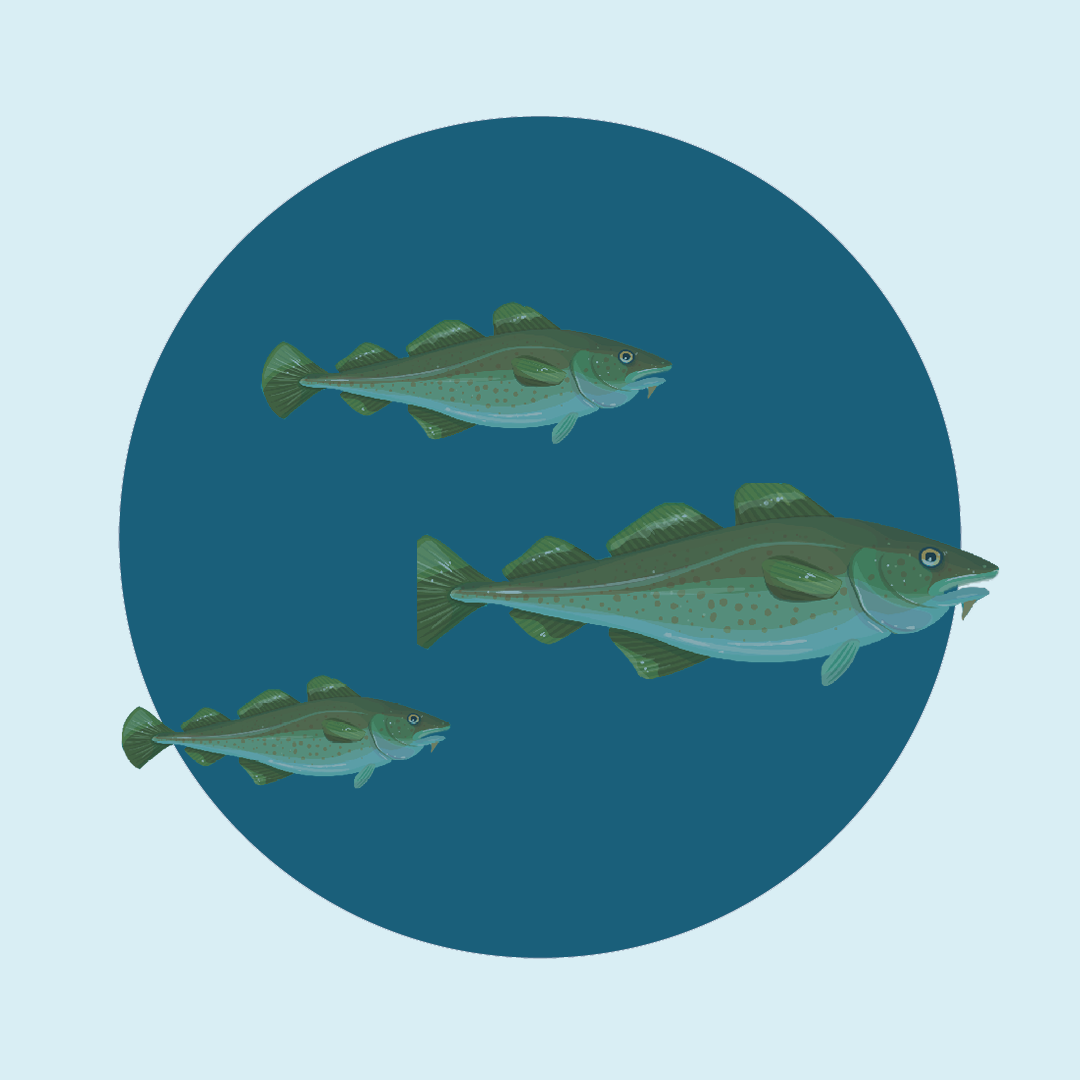Since 2022, BalticWaters has been funding research for a living Baltic Sea. One of the first projects to receive support was Do parasites and hypoxia prevent a recovery of Eastern Baltic cod?. Now that the project has been completed, we are once again seeking out Yvette Heimbrand, a researcher in the project, to hear about the project’s results – and what they mean for the Baltic Sea.
The eastern Baltic Sea cod stock is under threat – a result of overfishing combined with factors such as oxygen depletion, parasites and seal predation. Despite cod fishing having been halted since 2019, cod in the southern Baltic Sea has not yet recovered. Instead, it is growing slowly, is small and meagre.
But there is one mysterious exception. In the Sea of Åland, cod are large and thriving, despite liver parasites and high densities of grey seals. Oxygen conditions here are significantly better than in the southern Baltic Sea – something that raised many questions for Yvette Heimbrand and her research colleagues at SLU Aqua and the Technical University of Denmark, DTU Aqua.
‘Previous studies have shown that food shortages contribute to poor cod growth and that low oxygen levels reduce the production of bottom-dwelling prey. But we didn’t know what effect liver parasites and oxygen deficiency had on cod growth,’ says Yvette.
To find the answer, the researchers compared cod from the Sea of Åland and the southern Baltic Sea. By analysing how oxygen deficiency and liver parasites – individually and together – affect the fish, they hoped to solve the mystery behind the success of Åland cod.
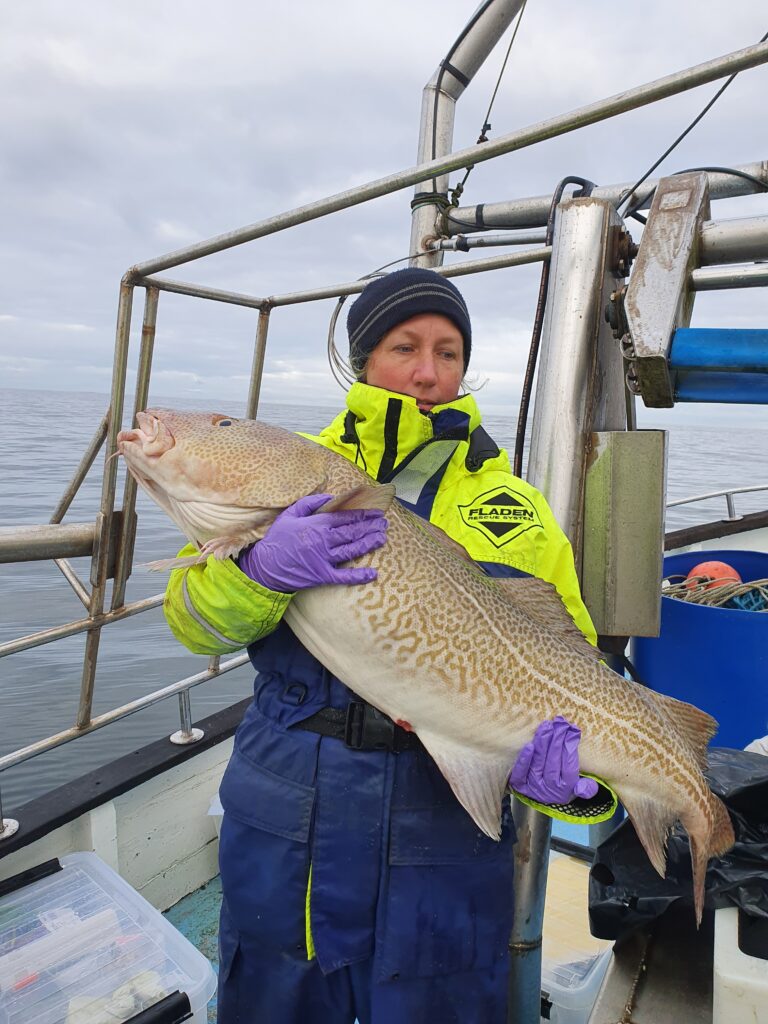
Cod grow less well when there is a lack of oxygen
The project consisted of two different parts. The first part investigated the effect of oxygen deficiency in an eight-week experiment at DTU Aqua. Inside the laboratory, cod were placed in two large tanks – one with normal oxygen conditions and one with low oxygen levels.
The main purpose was to investigate how oxygen deficiency affects the chemical composition of the cod’s ear stones, known as otoliths. These grow throughout the fish’s life and form annual rings in the same way as tree trunks. The otoliths store a wealth of chemical information, and by examining them, researchers can gain knowledge about the cod’s growth, health and habitat at different stages of its life.
It soon became clear that the cod in the oxygen-depleted water grew significantly less than the fish in the oxygen-rich tank. The researchers also found significant differences in the chemical analysis: the cod exposed to oxygen depletion had lower levels of trace elements linked to the fish’s metabolism and growth.
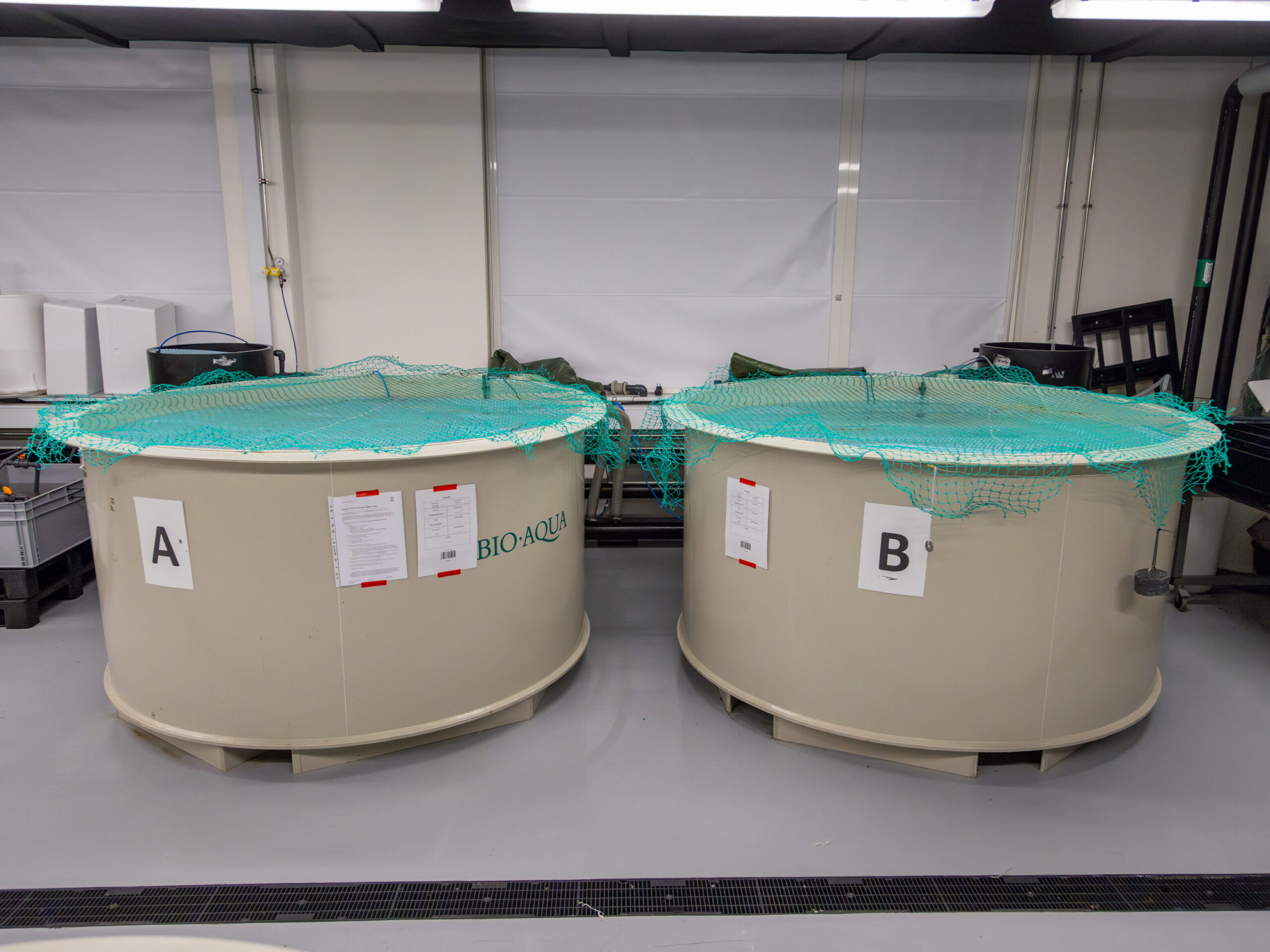
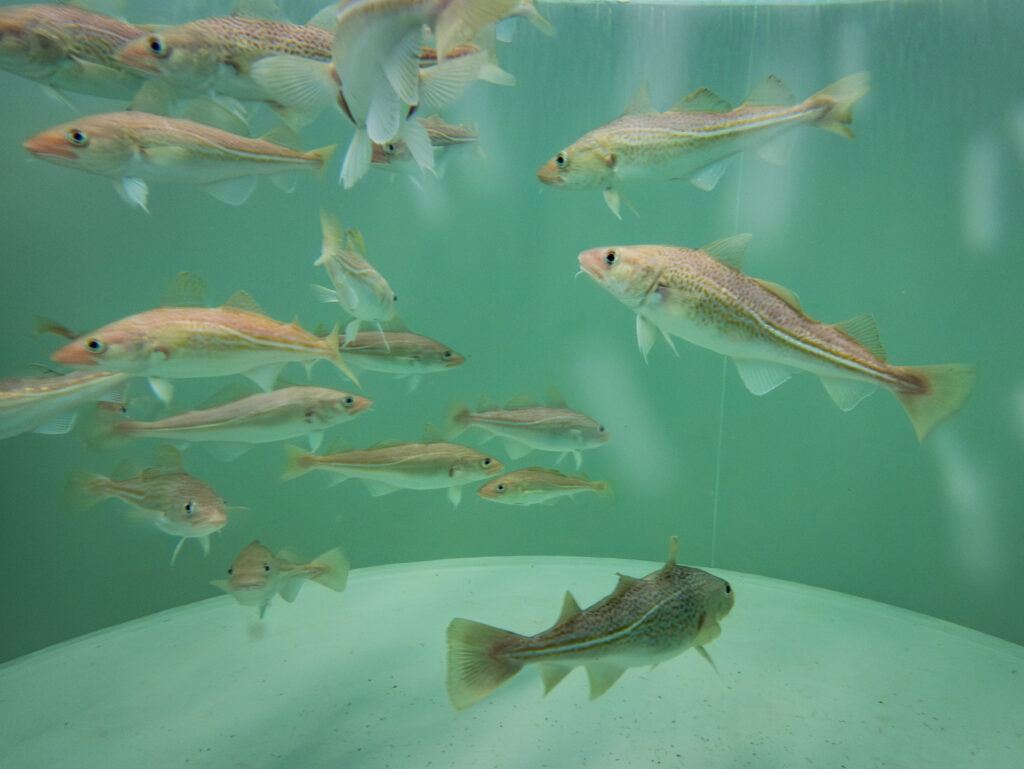
Periods of oxygen deficiency can also have a negative impact on cod growth
In the second part of the project, the researchers left the laboratory and went out into the field. Cod from the Sea of Åland were compared with cod from the Bornholm Basin, where oxygen conditions are poorer. The researchers observed that cod from the Sea of Åland were in better condition and grew better, and that there were plenty of large individuals in the deep, oxygen-rich area. They also had higher levels of growth hormone and were more resistant to liver parasites.
‘These patterns confirm the results of the lab experiments and indicate that oxygen depletion in large parts of the Baltic Sea may have significant negative effects on the condition and growth of cod,’ says Yvette.
By analysing a trace element in the otoliths that indicates oxygen deficiency, the researchers were also able to see that growth was impaired not only in cod from the Bornholm Basin, but also in Åland cod that had spent part of their lives in oxygen-depleted areas.
‘Some cod are more stationary, while others move around more. We could see that individuals in the Åland Sea that had spent time in oxygen-depleted environments grew less well than those that had remained in areas with plenty of oxygen. This shows that even shorter periods of oxygen depletion can have a negative effect,’ says Yvette.
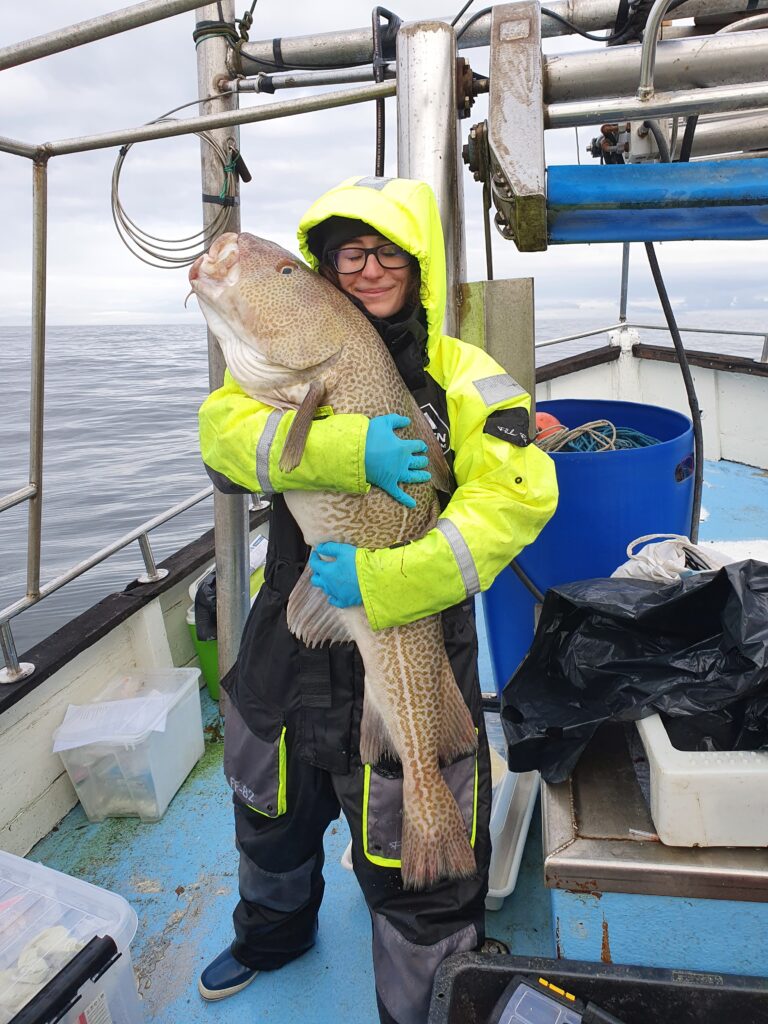
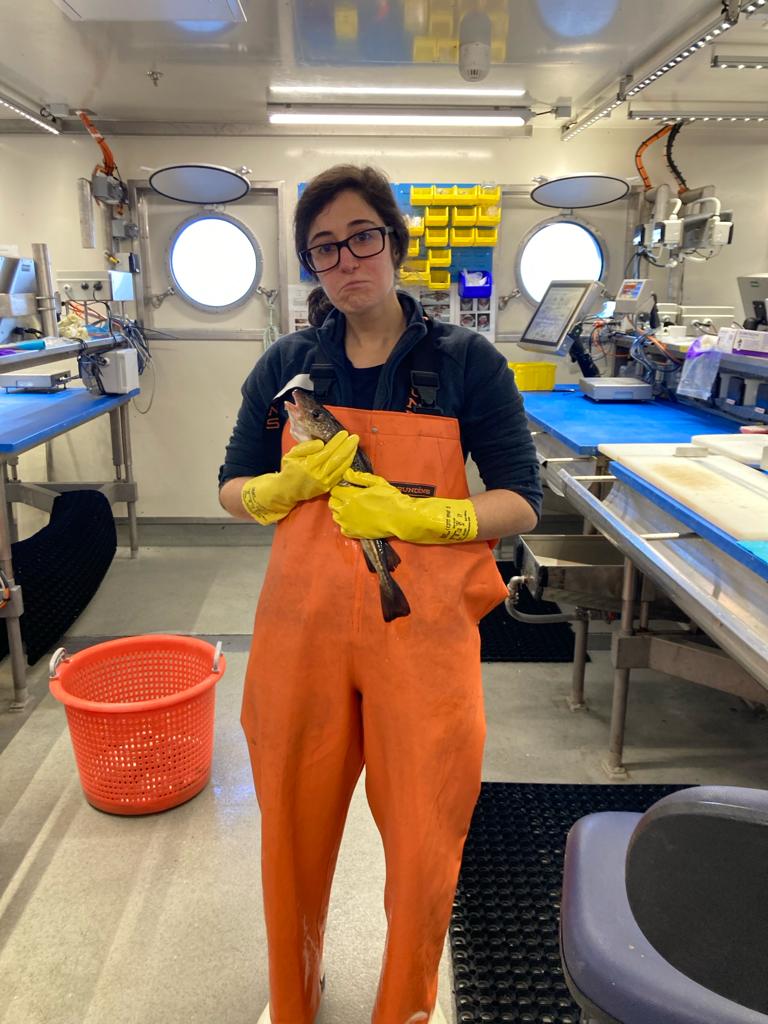
Reduced eutrophication and more prey fish can benefit cod
The oxygen deficiency in the Baltic Sea is primarily the result of decades of eutrophication. Despite extensive measures to reduce eutrophication, large areas still suffer from oxygen deficiency. The situation may also be exacerbated by climate change, as rising water temperatures and changes in water inflows from the North Sea affect oxygen conditions.
It has been known for some time that oxygen depletion is a problem for cod reproduction, but the results of the project show that it also has a significant effect on the well-being of cod. But what does this mean for the stock’s ability to recover?
Closing the fishery has not been enough, as was initially hoped. Our results indicate that oxygen depletion also affects cod growth and resistance to parasite attacks, which means that more ambitious and long-term measures to reduce eutrophication are necessary for cod recovery, says Yvette.
And in the short term?
– One possible measure could be to reduce fishing for herring and sprat in the southern Baltic Sea, where growth is low, as these are important prey for cod. It may also be particularly important to protect and increase knowledge about Åland cod, as the stock there is still showing good growth, she adds.

About the project
The project Do parasites and hypoxia prevent a recovery of Eastern Baltic cod? is being carried out by the Swedish University of Agricultural Sciences in collaboration with the Technical University of Denmark, DTU Aqua. Through BalticWaters’ programme for research projects and preliminary studies, the project has been granted SEK 1 million for the scientific part of the project.
Read more about the project in the article: ‘Project will investigate why cod are small and meagre’.
